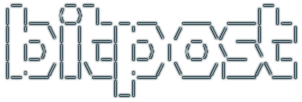I love computers and I love user interfaces. I’m pretty lucky to have had access to so much beauty and function. The first real desktop I fell in love with was on my Amiga 2000, circa 1987, and it’s not that different from what we have today – a desktop with icons, a mouse with a highly-responsive, high-precision, (even animated!) cursor, and the ability to run many apps side by side. So have we come much farther?
You have to make an effort in this information age to remain productive. We are constantly bombarded with incoming data that overloads our senses and shuts down our own creativity. Even the ultimate interactive device, the computer, is more and more just used as a browser of the various garbage heaps strewn about the internet.
For me, productivity begins when you move your hand from the mouse to the keyboard. That’s the moment where you begin to carve something out. Other than when applied to computer modelers and other artists, this rule is pretty reliable. Nobody gets any real work done on an iPad or iPhone. Oh snap! Following this line of thought, the primary purpose of an excellent desktop user interface is to move you from desktop to desktop and app to app with the least amount of mouse effort. Following from that, these are the specific primary goals of the ultimate desktop experience:
- Support 2 monitors. When you really get into a task, you’re going to want to maximize its primary window. But almost every task will require movement of data from one app to another. Two windows allows one task to be quickly maximized with the keyboard, and then the other window can be used to host all the other supporting apps, or a maximized second app, as needed. It’s the perfect configuration to display 2..n apps at once.
- Support 4 virtual desktops. This is basically the number of tasks that you would work on at the same time. It’s a balanced number – any less and you are not at your most productive, any more and the number of things you’re doing simultaneously get hard to track.
- Support keyboard driven app switching, maximization, and minimization. This lets you do the most common window tasks quickly without even moving to the mouse at all.
- Support keyboard driven virtual desktop switching, again to perform the most common tasks at lightening speed.
- Support keyboard driven movement of the focused app to any other desktop. Another of the most common actions required to organize your major tasks.
Those are the big tasks, dealing with apps that are typically taking up an entire screen. You will find that most modern desktop environments have evolved to provide these basic mechanisms.
What about when you need to work with several apps at once? There are a few different approaches to arranging multiple apps on one screen:
- Dynamic tiling
- Keyboard-driven tiling
- Manual mouse-driven tiling, with keyboard assistance
Dynamic tiling is a great idea, but it should come with the ability to adjust the width and height of the columns and rows very quickly, and that seems to be lacking. Most windows managers at least provide the third option, which should come with these accelerators to be efficient:
- Provide keyboard modifiers to instantly move and resize the window from any mouse location over the window.
- Provide window snapping at every edge.
How do the big ones stack up? After the break… (continued…)







